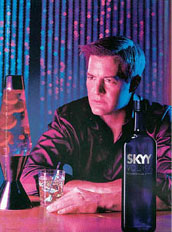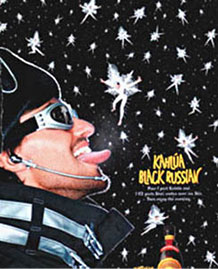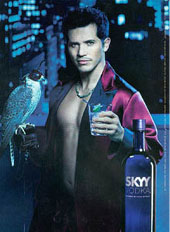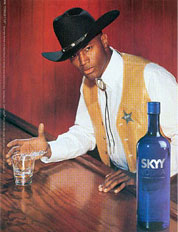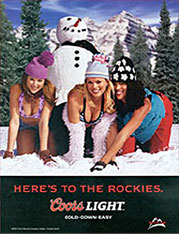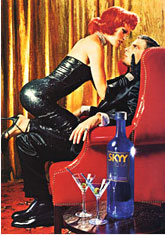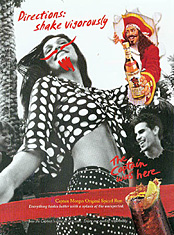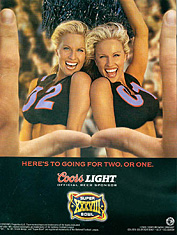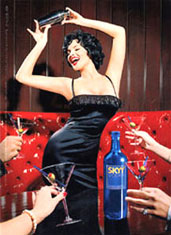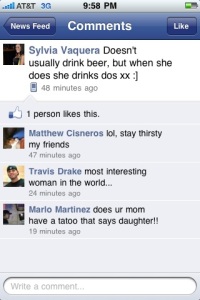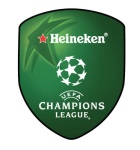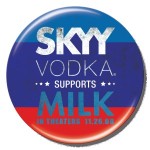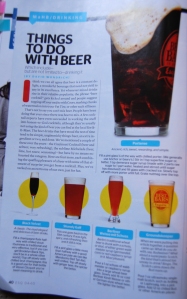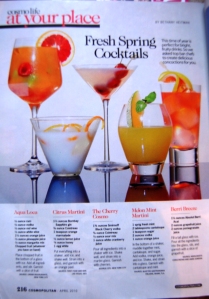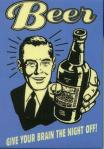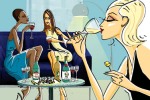As aforementioned in the post regarding the articles in the April 2010 issues of Esquire and Cosmopolitan magazines, fruity drinks correlate to a female audience while bitter drinks and beer are catered to men. This trend is also apparent throughout the advertisements in said magazines, as well as others.
The most frequent alcohol ad to appear in women’s magazines were for “fruity” hard liquor drinks.

Glamour May 2010

Cosmopolitan April 2010
As stated by Killing Us Softly 3 (see previous post) women are constantly portrayed as thin in advertisements. It is likely that this causes the female audience, bombarded with these images, to be diet-crazy. Hence, many women may follow a diet full of vegetables and fruit aka: “healthy foods”.
This showcases semiotics where the the ads’ captions about being “all natural” or a “mix of berries” serve as the “signifier” and the “signified” are the alcoholic drinks themselves. The two entities together send the faux message of a “healthy drink” (Leiss, Kline, Jhally, Botterill 164-65). This idea of “health” is further enhanced by the “Go Natural” caption on the SKYY ad and the text included in the Absolut advertisement.

Caption under Absolut Vodka "Berry Acai" Ad
Blueberries and pomegranates are veteran “super foods”, found on almost every list, and the “acai” berry is the newest addition. To the consumer, this drink seems to provide a “triple threat” of “super-healthy” food and qualities. However, this is not an ingredients list, but merely what flavors the alcohol contains. Ironically, this flavor is obtained through sugary syrups and chemicals… the opposite of “healthy”.
Hard liquors are also advertised to men:

Maxim May 2010

Esquire April 2010

GQ May 2010
However, unlike with the females, most of the liquors advertised to men do not contain additional flavors but remain as the pure liquor. The “fruity drink” ads that do appear either show sexual images of women or ideas of toughness, as the previous post explains.
As a college student, I also observe men relate thirty drinks as “weak” and regular hard liquors as a way to prove “toughness”. This, too, relates to the video Tough Guise, discussed in the previous post. I also view this incident as a way to portray men as “keeping it simple”, which was stated in the Esquire article explaining their love for beer.

Esquire April 2010 article explains men being highly esteemed the male population. Also, men do not like "silliness" such as fruits added to their beer, and prefer to "be simle, ungimicky".
However, some beer ads seem catered to women:

Select 55 ad in Cosmopolitan April 2010
As with the fruity drinks, this beer ad serves the “diet-crazed” woman, guaranteeing that this beer is low in calories and therefore healthy/safe to drink.
Overall, advertising gears sweet, fruity, and seemingly-healthy drinks towards women, whereas present simple and strong or bitter beverages towards men.
-SG

